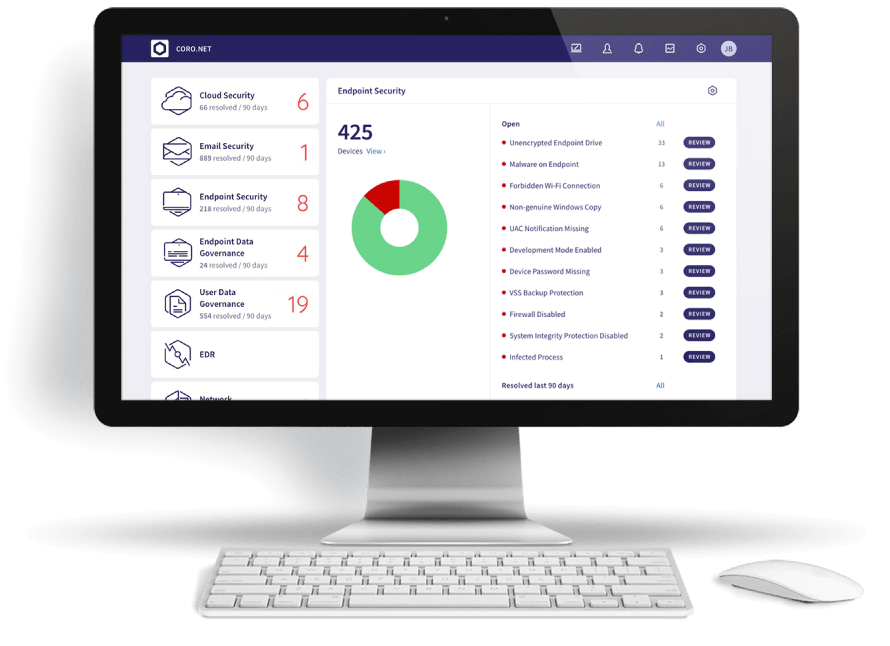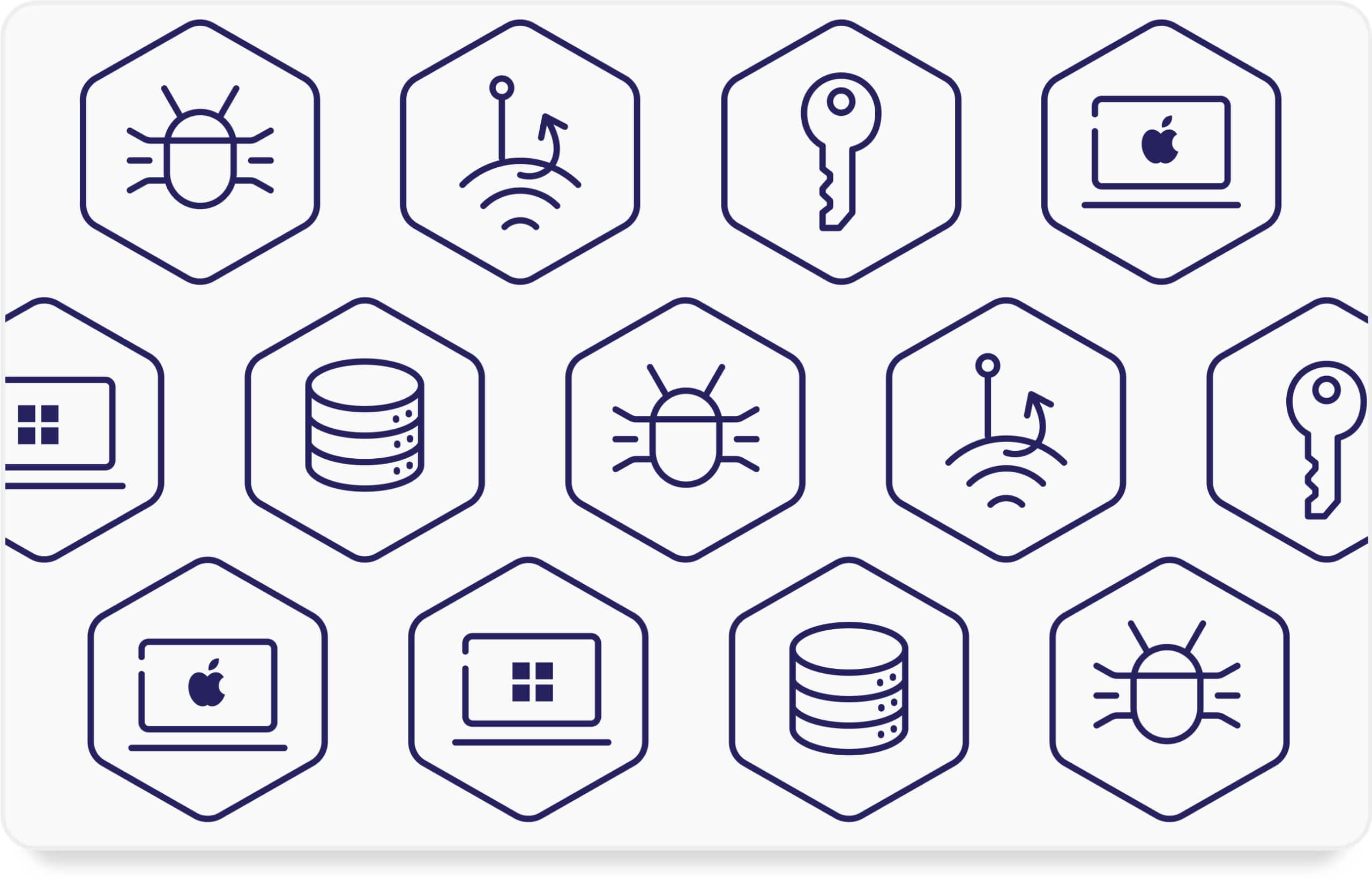An incident response plan outlines a company’s coordinated approach to identifying, containing, eradicating, and recovering from a security incident, such as a malware attack.
Forms/Types of Incident Response
There isn’t a single universally accepted way to categorize different types of incident response, but most incident response plans consist of the same key stages including:
- Preparation: This stage involves defining roles and responsibilities, establishing communication protocols, and conducting regular training exercises to ensure team members are familiar with the plan.
- Identification and Detection: Security measures like firewalls and intrusion detection systems (IDS) can help identify suspicious activity that might indicate a potential attack.
- Containment: Once a security incident is confirmed, the plan outlines steps to isolate the affected systems, prevent further spread of the malware, and stop data exfiltration.
- Eradication: This stage involves removing the malware from infected systems and identifying and patching any vulnerabilities exploited in the attack.
- Recovery: The plan guides restoring affected systems and data from backups.
- Post-Incident Review: Following the incident, a thorough investigation is conducted to understand the root cause, identify lessons learned, and update the incident response plan to address any weaknesses.
You could compare your computer system to your home. It’s filled with valuables (data) and you have security measures in place to keep it safe, e.g. fire alarms.
An Incident Response (IR) plan is like having a well-rehearsed fire drill for your house, so that you know what to do in the event of a fire. If the smoke alarm goes off, you would generally take action and evacuate before calling in the fire department to deal with the emergency. Afterwards, you’ll call your insurance and attempt to repair the damage as much as possible.
Just like a fire drill helps your family respond effectively to a real fire, an IR plan helps your organization react quickly and efficiently to security incidents, minimizing damage and ensuring a smooth recovery.
Why Should Businesses Care About an Incident Response (IR) Plan?
An IR plan may not prevent all security incidents, but it significantly reduces the impact and helps you recover faster and more effectively. Some of the benefits include:
- Faster Recovery: A well-defined plan ensures a swift and coordinated response, minimizing downtime and financial losses. Every minute a security incident goes unaddressed translates to lost productivity and potential revenue.
- Reduced Damage: Quick action can prevent the incident from escalating and causing widespread disruption or data loss. An IR plan helps contain the threat and minimize the impact on your critical systems and data.
- Improved Decision-Making: The plan provides a clear roadmap for handling a stressful situation. It outlines roles and responsibilities, ensuring everyone knows what to do and how to do it. Clear communication and defined protocols prevent confusion and allow for decisive action.
- Stronger Security Posture: Learning from each incident helps you identify weaknesses in your defenses. By analyzing past incidents and updating your IR plan accordingly, you can proactively strengthen your security posture and prevent similar attacks in the future.
- Compliance with Regulations: Many regulations in various industries mandate organizations to have an IR plan in place. Having a documented plan demonstrates your commitment to data security and helps you comply with relevant regulations.
Incident Response In the Context of Cybersecurity Frameworks
Incident response (IR) plays a critical role within various cybersecurity frameworks. These frameworks provide a structured approach to managing cybersecurity risks, and IR serves as the action plan for when those risks materialize into actual security incidents.
MITRE ATT&CK Framework
MITRE ATT&CK meticulously details the tactics, techniques, and procedures (TTPs) used by adversaries in cyberattacks. By mapping detected malicious activity to specific MITRE ATT&CK techniques, security teams gain valuable insights into the attacker’s goals and tactics. This knowledge empowers them to tailor their response and prioritize actions based on the severity of the identified vulnerabilities in the system or software.
NIST Cybersecurity Framework
NIST provides a voluntary framework for managing cybersecurity risk across five core functions: Identify, Protect, Detect, Respond, and Recover. The Respond function of the NIST framework directly aligns with incident response. It outlines best practices for:
- Preparation: Developing and maintaining an IR plan, including roles, responsibilities, and communication protocols. This aligns with the preparation stage of a typical IR plan.
- Detection and Analysis: Identifying and analyzing security incidents through various methods. This aligns with the identification and detection stage of an IR plan.
- Containment, Eradication, and Recovery: Implementing measures to contain the threat, remove the malware, and restore affected systems and data. These align with the containment, eradication, and recovery stages of an IR plan.
- Post-Incident Activity: Learning from the incident and improving future response capabilities. This aligns with the post-incident review stage of an IR plan.
Other Frameworks
Frameworks like SANS Institute Incident Response (SANS IR) and ISO 27001 also emphasize the importance of IR and provide guidance on developing and implementing an effective response plan.
Related Systems or Technologies
There are many technologies focused on the facilitation of a robust incident response:
- Security Information and Event Management (SIEM): SIEM systems aggregate logs and security events from various sources across the network, allowing security teams to identify suspicious activity that might indicate a potential security incident.
- Endpoint Detection and Response (EDR): EDR solutions focus on monitoring individual devices (endpoints) for malicious activity. They can detect malware execution, suspicious file access attempts, and other indicators of compromise (IOCs).
- Vulnerability Scanners: These tools scan systems and applications for known vulnerabilities that attackers might exploit. Regularly patching these vulnerabilities is crucial to prevent them from being used as entry points for attacks.
- Network Traffic Analysis (NTA): NTA tools monitor network traffic for anomalies that could signal a security incident, such as unusual data exfiltration attempts or unauthorized access attempts.
- Firewalls: These act as gatekeepers, filtering incoming and outgoing network traffic. They can be used to block malicious traffic and prevent attackers from further compromising the network.
- Antivirus and Anti-Malware Software: These programs can be used to detect and remove malware from infected systems. It’s important to keep them updated with the latest threat signatures for optimal protection.
- Threat Intelligence Platforms: TIPs aggregate threat data from various sources and provide insights into current attacker trends and tactics. This information can be used to improve IR planning and identify potential threats before they materialize.
- Security Orchestration, Automation, and Response (SOAR): SOAR platforms automate repetitive tasks associated with incident response, allowing security teams to focus on more complex activities.
Related Regulations or Compliance Goals
The prevalence of cyber threats has prompted several industry regulations and compliance goals to address how companies handle security incidents, including incident response (IR):
- PCI DSS (Payment Card Industry Data Security Standard)
A security breach involving credit card information can be devastating for a company. PCI DSS mandates specific requirements for IR, such as:
- Requirement 6.1.1: Implement a process for identifying and responding to security incidents.
- Requirement 6.2: Maintain and make readily available procedures for handling security incidents.
- HIPAA (Health Insurance Portability and Accountability Act)
A healthcare provider’s data breach could expose sensitive patient information. HIPAA requires implementing appropriate safeguards to ensure the confidentiality, integrity, and security of PHI, including having a process for detecting, investigating, and correcting security incidents (Security Rule).
- NIST Cybersecurity Framework
The NIST framework outlines best practices for identifying, protecting against, detecting, responding to, and recovering from cybersecurity incidents. It can be used as a guide for developing a comprehensive IR plan.









